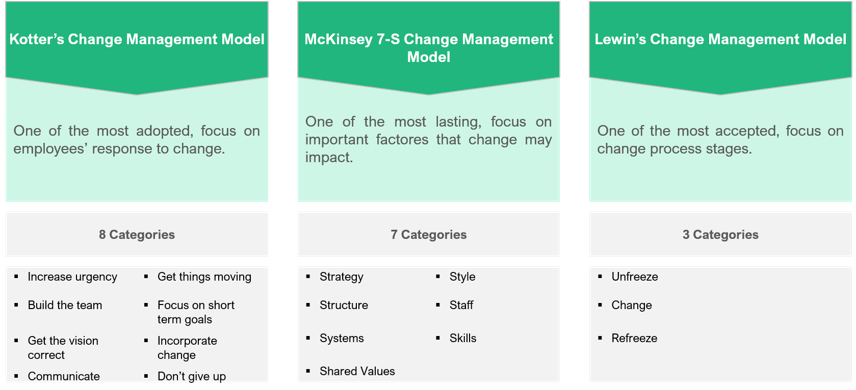As Charles Darwin said “It is not the strongest of the species that survives, nor the most intelligent that survives. It is the one that is most adaptable to change”. This statement is still valid nowadays even for the business and project management reality which is why it is important to guarantee stakeholders’ involvement during project implementation. They need to be prepared for change and know why the project is being implemented, what are the main project goals and, most important, what are their main roles and responsibilities. By keeping everyone aware of the project’s importance we make sure that everyone is integrated and comfortable with project progress and will help dealing with future changes that may appear.
Wysupp consultants and project managers, whose skills in Retail and Supply Chain Management are widely recognized, affirm that stakeholders are one of the most important elements regarding project and change management. If they are engaged with the project, they will feel part of the solution and not of the problem. It is very important to ensure that they actively contribute to the project’s success while feeling that their responsibilities will not be taken away from them.
Change in the business world
As everybody noticed, the world is changing at a fast pace and change management has become a critical success factor for every company that wants to survive in this competitive environment.
The actual pandemic showed us that the future is unpredictable and that we need to be prepared for changes in a very effective way. Beyond that, it taught us that more global crisis will happen again and technology will continue evolving so it is crucial for companies to be ready to adapt their processes and operations to new costumer’s needs, labor mobility, globalization as well as to new market regulations and constant access to information. In this sense, driving change is a challenge that most companies are already facing today and will need to continue to manage it tomorrow.
As so, it’s important to understand what Change Management is. Change Management can be defined as a systematic approach developed to deal with organizational goals, processes and technological transformations. The main goal of each change initiative is to effectively implement strategies and make sure that people accept and adapt to that change.
One of the most difficult challenges regarding Change Management is the fact that people are normally resistant to change because it’s very common to relate it with fear of the unknown and discomfort. To make sure that people are aligned with the company’s strategy, it’s important to guarantee that not only they clearly understand the process of change, its reasons and how it may impact their work but also that they are involved in the process and feel part of it.
Change Models
In order to implement changes within a company it is important to effectively plan ahead and structure the whole project. To do so, there are already some change management models developed that can be adapted to each company’s reality. Here are some of the most common ones:

The Kotter’s Change Management Model is focused on employees’ experience by preparing and building acceptability for change instead of the actual change process. This model is composed by 8 categories that aim to increase the employees’ response to change. It is an easy step-by-step model which provides a clear description and guidance on the entire process of change and is relatively easy for being implemented. On the other hand, it could be a time-consuming process and since it is a step-by-step model, skipping a single one might compromise the entire change process.
The McKinsey 7-S Change Management Model is focused on all the important factors that change may impact. It points out the business aspects that should be defined before the implementation of the change strategy. This model considers 7 categories subdivided into hard and soft elements. The hard elements can be easily defined and identified such as: strategy, structure and systems. The soft elements are difficult to identify because they are less tangible but also important to change strategy: shared values, style, staff and skills. This model identifies the inconsistencies or gaps between various elements and provides a strategic action plan for moving from the current state into the desired organizational one. Despite its advantages, this model is also considered to be more of a static kind of model, and it does not explain the concept of organizational effectiveness or performance explicitly.
The Lewin’s Change Management Model is focused on change process stages which are: Unfreeze, Change and Refreeze. The first stage goal is to overcome employees’ resistance to change, then it is necessary to implement the change, and finally guarantee that it is accepted. According to Lewin, change for any individual or organization is a complicated journey which may not be very simple and mostly involves several stages of transitions or misunderstandings before attaining the stage of equilibrium or stability. Because of its simplicity, many organizations choose to follow this model when implementing change, however, some critics say that the model fails to take into consideration the radical and transformation change, so it is only useful for incremental changes.
Change management during a project
Project management aims to deliver projects on time, within the agreed scope, quality requirements and planned budget. During a project implementation it is supposed to be able to create a new service or product which means that every project involves changes that need to be managed. Project management and change management both aim to increase the likelihood of projects or initiatives to deliver the intended results and outcomes. Although each area can function independently, the most effective approach is to integrate change management and project management to create a unified approach to implementing change on both fronts. Significant changes are normally implemented through projects and projects require changes management to ensure changes are implemented correctly and with minimum risk.
Changes must be seen as something normal within a project implementation. Despite having a very well-defined project plan, during project implementation there are many things that can change such as: the client’s perspective and needs, the project teams and even the project scope, among others. Project managers should be prepared to manage changes accordingly by defining a systematic approach to identify, assess and control issues that cause changes. Every change needs to be approved by the proper authority before it is implemented. The purpose is to ensure that no unnecessary changes are made, that all changes are documented, that projects are not disrupted and that resources are used efficiently. Moreover, it is very important to guarantee good communication with all stakeholders to ensure expectations alignment.
Lea Nogueira
Project Manager at Wysupp
16 July 2021

